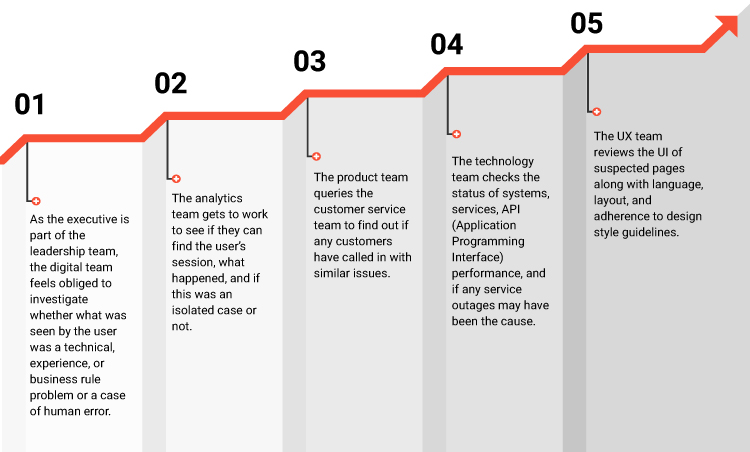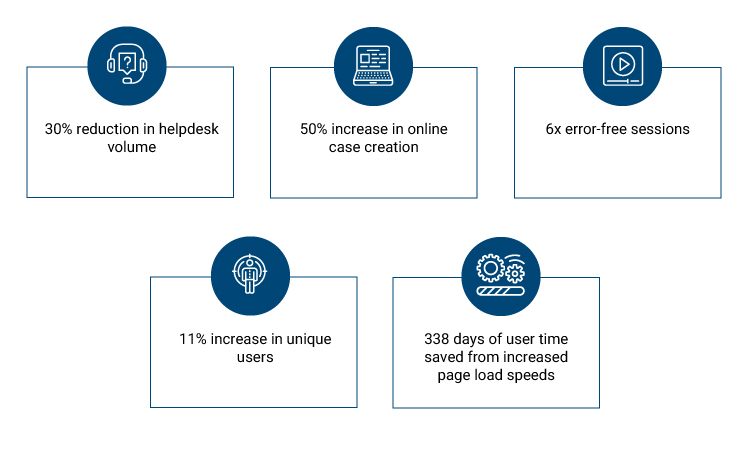The pace of digital transformation has encouraged many organizations to turn to managed IT services providers so they can focus on making technology an enabler for their business and have a strong technology foundation to steer it to success. As per a report by Markets and Markets, the managed services market will be worth $372.6 billion by 2028, growing at an annual compound growth rate of 6.2%.
Although managed services offer numerous cost and efficiency benefits, when it comes to getting approval of the C-Suite, it’s all about ROI: what will they get in return when they partner with a managed services provider?
Read on to get a better understanding of the benefits of managed IT services and learn about its true ROI.
What are Managed IT Services?
Managed IT Services is the practice of fully or partially outsourcing the development, implementation, migration, maintenance, and upgrade of different parts of IT infrastructure or applications to a skilled and experienced third-party vendor. These vendors or managed services providers (MSPs) are typically located remotely or operate from a near-shore or offshore location. They also offer robust IT infrastructure management and 24/7 helpdesk support services.
Why Partner with a Managed Services Provider (MSP)?
As organizations strive to stay competitive and relevant, the complexity of managing technology infrastructure and the constant emergence of new trends poses significant challenges. The top 3 reasons why organizations partner with an MSP are:
- Lack of in-house technical skills.
- The pressure to adapt to the latest technology trends at the speed of now.
- The need to ensure regulatory compliance and optimum cyber security.
Embracing managed IT services ensures your company benefits from consistent pricing and the flexibility to focus on essential business challenges rather than the intricacies of IT management.
What are the Benefits of Managed IT Services?
Lack of strategic advice, inadequate standards and procedures, vulnerable cybersecurity, substandard customer service, and a shortage of available IT talent make it hard for companies to run their businesses efficiently and securely.
In recent years, forward-thinking companies have embraced IT outsourcing to save costs in non-critical business areas and entrust MSPs with back-office and core business processes. Such collaborations are built on business outcomes rather than cost-effectiveness.
And it’s not just simple database management or application development that is being contracted. Today, contracting the C-suite is becoming a global phenomenon, clearly stating that you can outsource any service or department, to enhance results and returns.
Let’s look at the tangible benefits of partnering with an MSP:
1. Achieve True Optimization
When you collaborate with an MSP, you can be sure that the right and most advanced set of technologies is being implemented to satisfy both employee and customer requirements. A qualified managed IT services partner can ensure that you can easily adopt the latest and most modern technologies and solutions to meet your business needs. A partner can also help provide necessary IT support services across upgrading, updating, modernizing, and managing your IT systems and driving true optimization.
2. Get a Better Grip on Security Risks
Companies, regardless of their size or industry, are susceptible to cyberattacks. By partnering with managed services providers, organizations have the required security controls, tools, and frameworks to minimize the probability and impact of a security breach. They can better track their data and systems and proactively identify attempts to steal, misuse, or share unauthorized information. At the same time, they can also have the necessary policies and resources in place to recover from a breach while also preventing similar attacks from happening in the future.
3. Better Manage and Optimize Costs
Yes, cost-effectiveness is still one of the main reasons why companies opt for managed IT services. Today, most managed services are offered via the pay-per-use model, allowing organizations to pay only for the services they use – while eliminating capital expenditure on expensive servers, systems, and other on-premises infrastructure.
Also, it relieves the pressure to hire and train resources, enabling companies to access all the expertise and skill sets they need when needed. This allows them to lower their operational costs while focusing on growing their business.
4. Improve User Productivity
With managed services, organizations also gain the advantage of boosting user productivity. A trusted partner can ensure the right tools and systems are implemented, empowering employees to carry out their tasks optimally.
Automated workflows, modern user interfaces, and seamless integration enhance overall efficiency and contribute to achieving business objectives more rapidly. Simultaneously, a managed IT services partner is committed to ensuring all systems operate at their peak performance, consistently addressing issues for maximum operational excellence and user satisfaction.
What are the Different Types of Managed Services?
Managed services can be applied to support and manage various technology or service areas. However, the key service domains include:
1. IT Infrastructure Management Services
IT Infrastructure Management Services facilitate the continuous monitoring and support of IT systems, applications, and infrastructure around the clock. This allows organizations to concentrate on advancing their business without the burden of day-to-day technology management.
2. Application Management Services
Modern applications demand ongoing management throughout their lifecycle. Application Management Services help maintain and optimize the performance and functionality of these applications. From incident resolution to addressing user requests with specialized product knowledge, these services enhance application uptime, scalability, and security.
3. Data Managed Services
As the accumulation of vast amounts of data becomes a global challenge, Data Managed Services help organizations efficiently manage organizational data, addressing data growth, cleansing, storage, analysis for insights, and supporting evidence-based decision-making.
4. Cloud Management Services
Cloud forms the bedrock for digital transformation initiatives, but managing migration, resources, and ensuring availability while optimizing costs can be complex. Cloud Management Services provide comprehensive expert services to streamline day-to-day cloud management, ensuring functionality, addressing security and privacy concerns, and maximizing cloud ROI.
5. Workforce Productivity Managed Services
With the workforce becoming increasingly hybrid, managing, and empowering geographically dispersed employees is a significant challenge. Workforce Productivity Managed Services establish an interconnected and interoperable workplace by implementing and managing modern productivity tools, fostering collaboration between cross-functional teams while maintaining high levels of security and functionality.
6. Cybersecurity Managed Services
It is a time of heightened cyber-related threats, which means the need for strong cybersecurity measures. Cybersecurity Managed Services assist organizations in establishing effective cybersecurity controls and policies across networks, servers, applications, users, and secondary devices. Through continuous monitoring, such services enhance enterprise security, helping organizations keep pace with the evolving threat landscape.
Engage with a Top Managed Services Provider
If achieving the desired ROI from your information technology investments has been challenging, it may be attributed to the difficulty of fully leveraging modern technology. Limited expertise and the rapid pace of change hinder the efficient management of complex IT systems. This is why many organizations are increasingly turning to managed service providers for their IT needs.
As a top managed services provider in Boise, Synoptek offers Innovation as a Service. We provide seamless access to expert resources, tools, and processes, creating a tailored and comprehensive managed services model for your business. The aim is to address your unique requirements and priorities while ensuring optimal utilization of modern technology.
Need more information? Download this white paper or talk to our managed services experts in Boise today!









